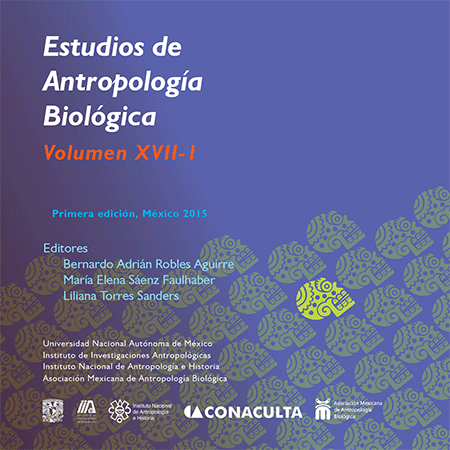Death’s Effigies: ritual decapitation and cranial modification of Ofrenda 141 from Templo Mayor de Tenochtitlan
DOI:
https://doi.org/10.22201/iia.14055066p.2015.56837Keywords:
Decapitation, Great Temple, effigies, MictlantecuhtliAbstract
Decapitation was the most important ritual treatment conducted on the sacrificial victims found at the Great Temple of Tenochtitlan. From 1948 to 2012 more than one hundred human skulls were discovered during the excavation of the site. Most individuals were deposited in the offerings, while others were placed in the construction fill. Biological profile of decapitated victims is diverse: males, females and children were buried. Biostratinomic processes were also diverse: some of the heads were buried soon after the death, while others were modified by using complex techniques, in order to manufacture effigies related to death and earth. Offering 141 was deposited at the plaza west to the Templo Mayor, in the axis that divided the shrines of Tláloc and Huitzilopochtli. In this paper we describe cultural modifications conducted on seven human skulls found in this offering, characterized by its extraordinary polychromy preservation that allowed the pictorial reconstruction. We also present the conclusions on the effigies symbolism and the garments associated.
Downloads
Downloads
Published
How to Cite
Issue
Section
License

http://creativecommons.org/licenses/by-nc-nd/4.0/

